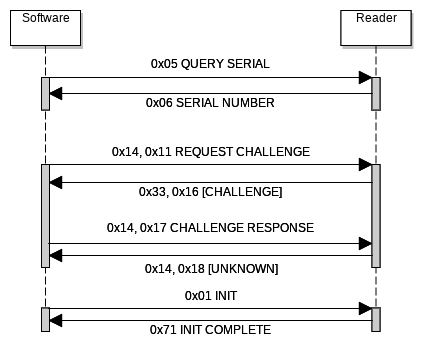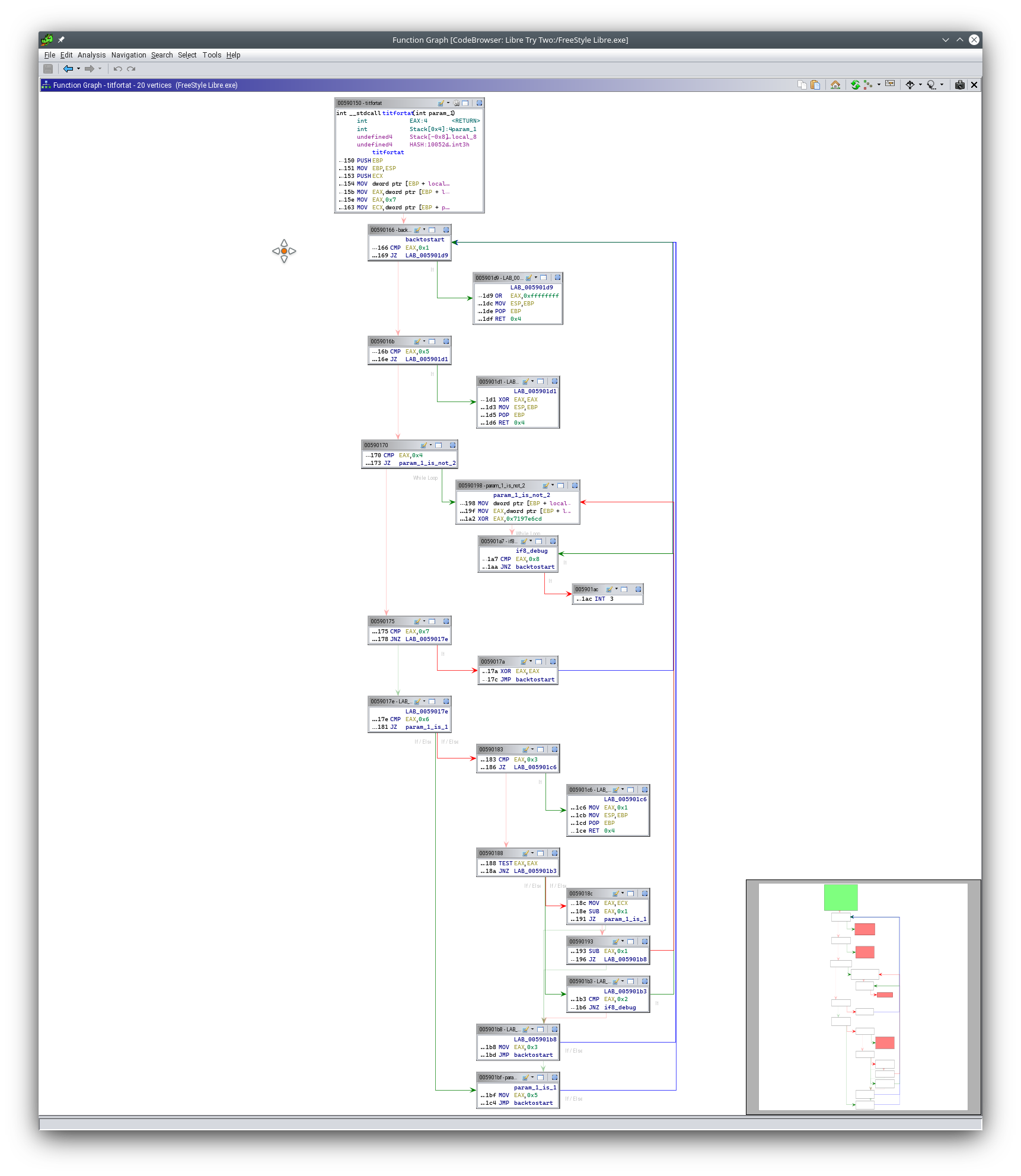As I wrote last week, I’ve started playing with Ghidra to dive into the FreeStyle Libre 2 software, to try and figure out how to speak the encrypted protocol, which is in the way to access the Libre 2 device as we already access the Libre 1.
I’m not an expert when it comes to binary reverse engineering — most of the work I’ve done around reverse engineering has been on protocols that are not otherwise encrypted. But as I said in the previous post, the binary still included a lot of debug logs. In particular, the logs included the name of the class, and the name of the method, which made it fairly easy to track down quite a bit of information on how the software works, as well as the way the protocols work.
I also got lucky to find a second implementation of their software protocol. At least a partial one. You see, there’s two software that can communicate with the old Libre system: the desktop software that appears to be available in Germany, Australia, and a few other countries, and the “driver” for LibreView, a service that allows GPs, consultants, and hospitals to remotely access the blood sugar readings of their patients. (I should write about it later.) While the main app is a single, mostly statically linked Qt graphical app, the “driver” is composed of a number of DLL modules, which makes it much easier to read.
Unfortunately it does not appear to support the Libre 2 and its encryption, but it does help to figure out other details around the rest of the transport protocol, since it’s much better logged, and provides clearer view of the function structure — it seems like the two packages actually come from the same codebase, as a number of classes share the same name between the two implementations.
The interesting part is trying to figure out what the various codenames mean. I found the names Orpheus and Apollo in the desktop app, and I assumed the former was the Libre and the latter the Libre 2, because the encryption is implemented only on the Apollo branch of the hierarchy, in particular in a class called ApolloCryptoLib. But then again, in the “driver” I found the codenames Apollo and Athena — and since the software says it supports the “Libre Pro” (which as far as I know is the US-only version that was released a few years ago), I’m wholly confused on what’s what now.
But as I said, the software does have parallel C++ class hierarchies, implementing lower-level and higher-level access controls for the two codenames. And because the logs include the class name it looks like most functions are instantiated twice (which is why I found it easier to figure out the flow for the non-crypto part from the “driver” module.) A lot of the work I’m doing appears to be manual vtable decoding, since there’s a lot of virtual methods all around.
What also became very apparent is that my hunch was right: the Libre 2 system uses basically the same higher level protocol as the Libre 1. Indeed, I can confirm not only that the text commands sent are the same (and the expected responses are the same, as well), but also that the binary protocol is parsed in the same way. So the only obstacle between glucometerutils and the Libre 2 is the encryption. Indeed, it seems like all three devices use the same protocol, which is either called Shazam, AAP or ATP — it’s not quite clear given the different set of naming conventions in the code, but it’s still pretty obvious that they share the same protocol, not just the HID transport, but also for defining higher level commands.
Now about the encryption, what I found from looking at the software is that there are two sets of keys that are used. The first is used in the “authentication” phase, which is effectively a challenge-response between the device and the software, based on the serial number of the device, and the other is used in the encrypted communication. This was fairly easy to spot, because one of the classes in the code is named ApolloCryptoLib, and it included functions with names like Encrypt, Decrypt, and GenerateKeys.
Also one note that important: the patch (sensor) serial number is not used for the encryption of the reader’s access. This is something that comes up time and time again. Indeed at least a few people have been telling me on Twitter that the Libre 2 sensors (or patches, as Abbott calls them) are also encrypted and that clearly they use the same protocol for the reader. But that’s not the case at all. Indeed, the same encryption happens when no patch was ever initialized, and the information on the patches is fetched from the reader as the last part of the initialization.
Another important piece of information that I found in the code is that the encryption uses separate keys for encryption and MAC. This means that there’s an actual encryption transport layer, similar to TLS, but not similar enough to worry me so much regarding the key material present.
With the code at hand, I also managed to confirm my original basic assumptions about the initialization using sub-commands, where the same message type is sent with a follow-up bytes including information on the command. The confirmation came from a log message calling the first byte in the command… subcmd. The following diagram is my current best understanding of the initialization flow:

Unfortunately, most of the functions that I have found related to the encryption (and to the binary protocol, at least in the standalone app) ended up being quite complicated to read. At first I thought this was a side effect of some obfuscation system, but I’m no longer sure. It might be an effect of the compile/decompile cycle, but at least on Ghidra these appear as huge switch blocks, with what is effectively a state machine jumping around, even for the most simple of the methods.

I took a function that is (hopefully) the least likely to get Abbott upset for me reposting it. It’s a simple function: it takes an integer and returns an integer. I called it int titfortat(int) because it took me a while to figure out what it was meant to do. It turns out to normalize the input to either 0, 1 or -1 — the latter being an error condition. It has an invocation of INT3 (a debugger trap), and it has the whole state machine construct I’ve seen in most of the other functions. What I found about this function is that it’s used to set a variable based on whether the generated keys are used for authentication or session.
The main blocker for me right now to figure out how the encryption is working, is that it looks like there’s an array of 21 different objects, each of which comes with what looks like a vtable, and only partially implemented. It does not conform to the way Visual C++ is building objects, so maybe it’s a static encryption library linked inside, or something different altogether. The functions I can reach from those objects are clearly cryptography-related: they include tables for SHA1 and SHA2 at least.
The way the objects are used is also a bit confusing: an initialization function appears to assign to each pointer in the array the value returned by a different function — but each of the functions appear to only return the value of a (different) global. Whenever the vtable-like is not fully implemented, it appears to be pointing at code that simply return an error constant. And when the code is calling those objects, if an error is returned it skips the object and go to the next.
On the other hand, this exercise is giving me a lot of insights about the insight of the overall HID transport as well as the protocol inside of it. For example, I finally found the answer to which checksum the binary messages include! It’s a modified CRC32, except that it’s calculated over 4-bit at a time instead of the usual 8, and thus requires a shortened lookup table (16 entries instead of 256) — and if you think that this is completely pointless, I tend to agree with you. I also found that some of the sub-commands for the ATP protocol include an extra byte before the actual sub-command identifier. I’m not sure how those are interpreted yet, and it does not seem to be a checksum, as they are identical for different payloads.
Anyway, this is clearly not enough information yet to proceed with implementing a driver, but it might be just enough information to start improving the support for the binary protocol (ATP) if the Libre 2 turns out not to understand the normal text commands. Which I find very unlikely, but you we’ll have to see.

Note that languages that support async/await style coroutines often implement the “restartable function” part using a state machine (often using a switch statement).
The function you posted looks like a switch statement, but unlikely to be using await. I’d guess it’s highly like to have been run through an obfuscator.
It might make it easier to untangle it if you renamed the “work” functions based on what they did (instead of what state was present to get there). Start at terminal states (ret 1, ret 0) and work backwards from there.
Also if you named the targets of the jumps bases on the state value and then replaced code that did move eax, n; jump top with jmp state_n, then it might start to untangle nicely.
(Of course I assume you have already gotten this far already, and maybe even wrote something to do that all automatically for you to apply for each function).
The vtable story sounds like someone implemented a homegrown “provider” interface. Each object can implement a core function, but only one does? Again it might also be an artifact of an obfucator.
http://tigress.cs.arizona.edu/ has several examples that this code sounds like it’s doing, particularly Reentrant Interpreters. It also has links to papers on reversing the obfuscation.
I saw http://www.jakstab.org/ mentioned in a couple of the papers. Unfortunately written in Java, but might be worth trying to see if it makes it easier to digest the code.